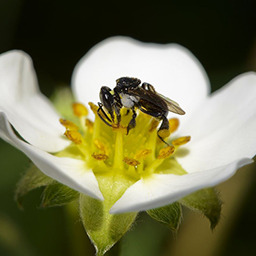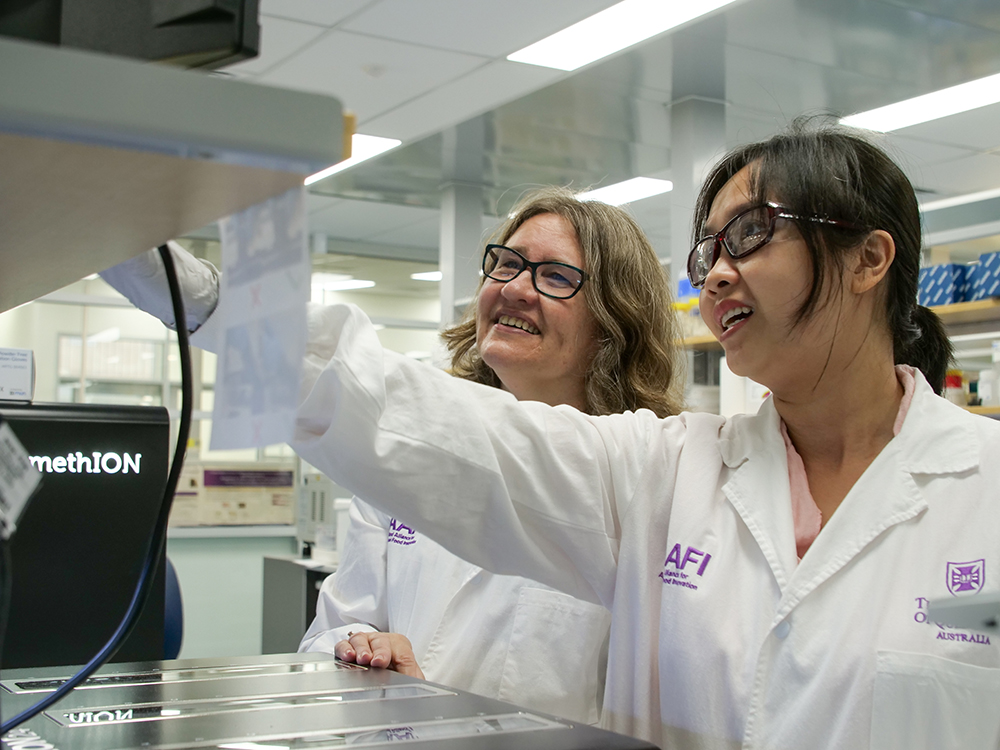Stingless bees are a common sight in northern and eastern Australia.
The special honey they produce doesn’t meet current national and international food standards for honey, due largely to differences in sugar composition.
Dr Natasha Hungerford at the Queensland Alliance for Agriculture and Food Innovation (QAAFI) at The University of Queensland (UQ) wanted to know why.

Working with Queensland and Malaysian researchers she set out to characterise the sugar content of a Queensland stingless bee’s honey but while doing that found more than she bargained for.
Now supported by a Sugar Industry Research Award from SRA, Natasha and her team are taking the first steps to produce a ‘smart’ sugar from the sucrose found in sugarcane with the help of Tetragonula carbonaria, a stingless bee found primarily in Queensland and commonly known as the sugarbag bee.
As a result of earlier research, and a lot of work that's been done by the Australian Native Bee Association (ANBA), an application has now gone into Food Standards Australia New Zealand (FSANZ) to adjust the food standard to include properties of stingless bee honey,” Natasha said.
While that was a great outcome for ANBA and the local stingless bee honey industry, it is only the start of an exciting and ambitious project that Natasha and her team are now undertaking.
“When we were characterising the honey we found an unusual sugar, in large quantities, that we couldn’t initially identify,” Natasha said.
“We eventually worked out that it was trehalulose, an alternative, and healthier, sugar to that commonly used,” she said.
“We believe that trehalulose is beneficial because previous studies have shown that it has a low glycaemic Index (GI), and is acariogenic, which means it doesn't cause tooth decay.
"It also has antioxidant properties.”
It is also 70 per cent as sweet as common sugar.
However, its chemical synthesis in the factory is complicated.
Industrial production involves enzymes that can convert sucrose into a mixture of trehalulose and isomaltulose.

The stingless bee’s natural enzyme could make this process a more viable option.
“While this was a serendipitous finding, we know that stingless bees have evolved a unique capacity to efficiently change the sucrose found in nectar to trehalulose,” Natasha said.
“We’re now working to understand this capability for commercial benefit - ultimately to use sucrose from sugarcane juice, as an inexpensive feedstock to produce trehalulose,” she said.
The first step is to understand and harness the bee’s ability to make this conversion by identifying and isolating the productive enzyme.
That enzyme can then be produced to convert sucrose to trehalulose.
Natasha is a Chemist and has called on the expertise of Dr Loan Nguyen, a Research Fellow at QAAFI who is an expert in long read DNA/RNA sequencing.
Loan will mentor PhD student Jiali Zhang in the project.
Jiali conducted experiments for his honours project to prove that when Tetragonula carbonaria were fed sucrose they would convert it to trehalulose.
Loan will now guide Jiali in the use of state-of-the-art Nanopore technology as well as cutting edge bioinformatics techniques to take the finding further.
“Nanopore sequencing is a unique and portable technology that enables direct, real-time analysis of long DNA or direct RNA molecules,” Loan said.
“By using this technology, we will assess RNA activity in the tissue glands of the bee with the aim of identifying the gene that is involved in the process that produces trehalulose.”

Natasha adds that the expression of the isolated gene would yield an enzyme to produce pure trehalulose directly from sucrose - a more efficient way to produce a smart sugar.
“During the lifetime of this initial 12-month project, supported by SRA, we hope first to purify the RNA and then identify the gene/enzyme that controls this special conversion of sucrose to trehalulose,” she said.
“Ultimately it is our hope to conduct fermentation trials to see how efficiently we can produce trehalulose.
Then potentially, further on down the track, we will work on optimising the process for converting sucrose to trehalulose at scale.
“Sucrose is produced in such big amounts by sugarcane.
"It would be a pretty amazing transformation if in the future we could turn it into trehalulose,” Natasha said.
Media: Dr Natasha Hungerford, n.hungerford@uq.edu.au; QAAFI Media, qaaficomms@uq.edu.au, +61 (0)409 135 651.
This article is republished with permission from Cane Matters, Autumn 2023, Sugar Research Australia.
